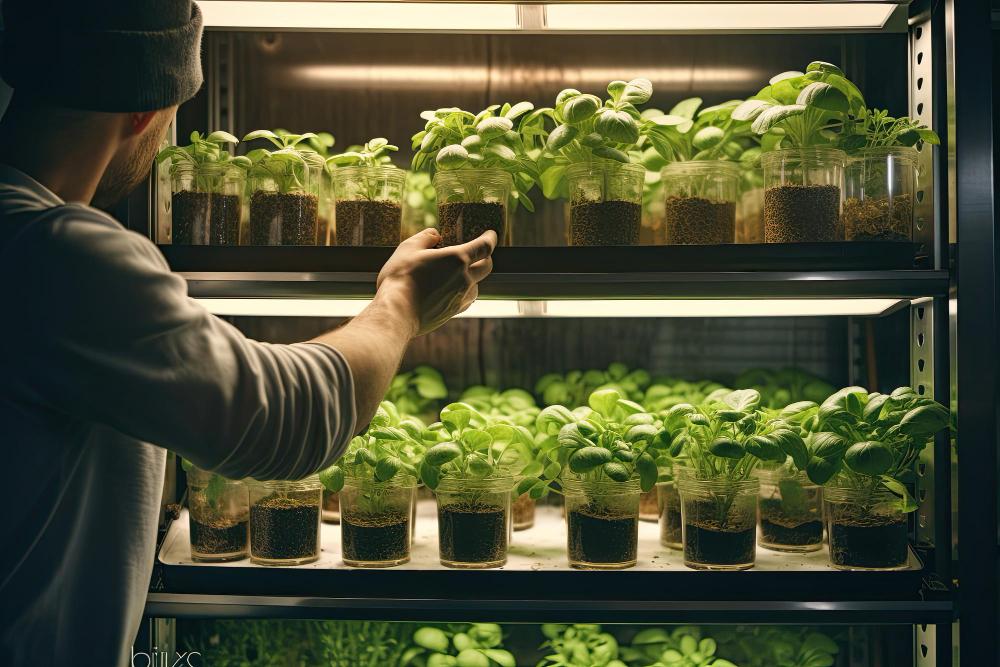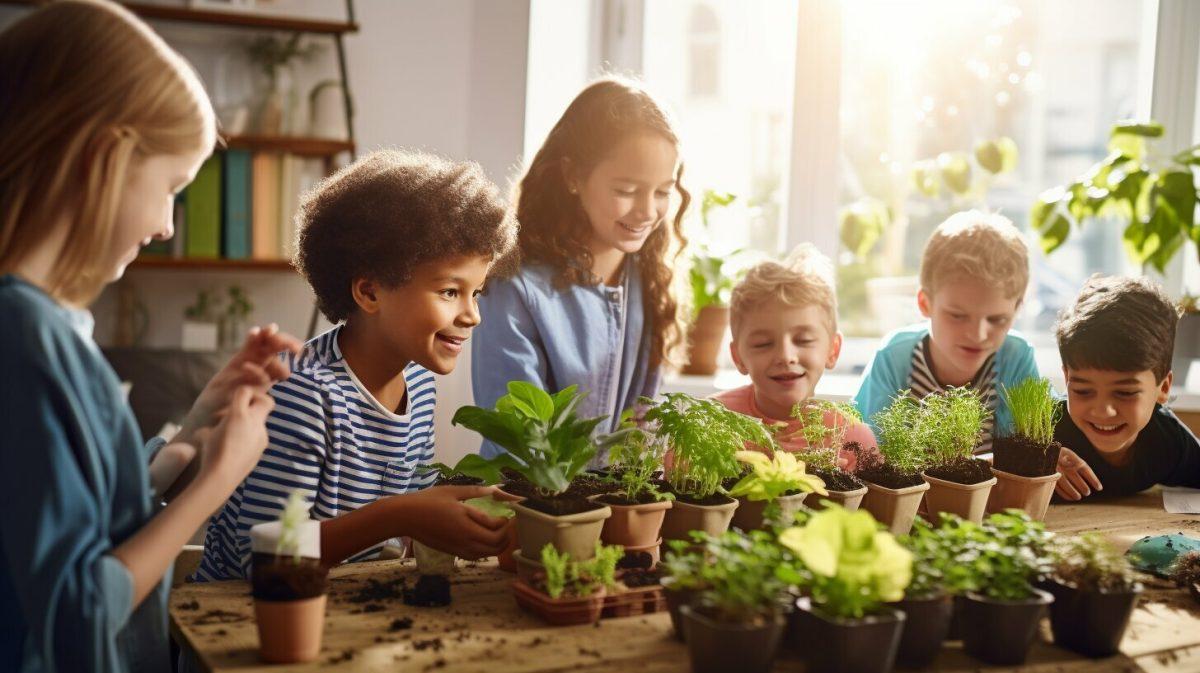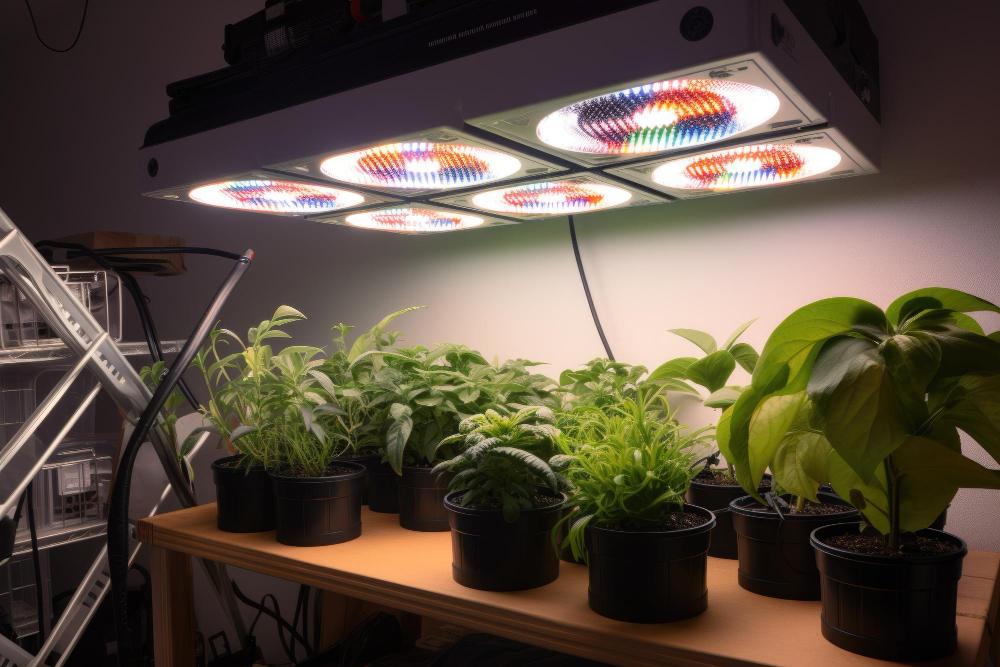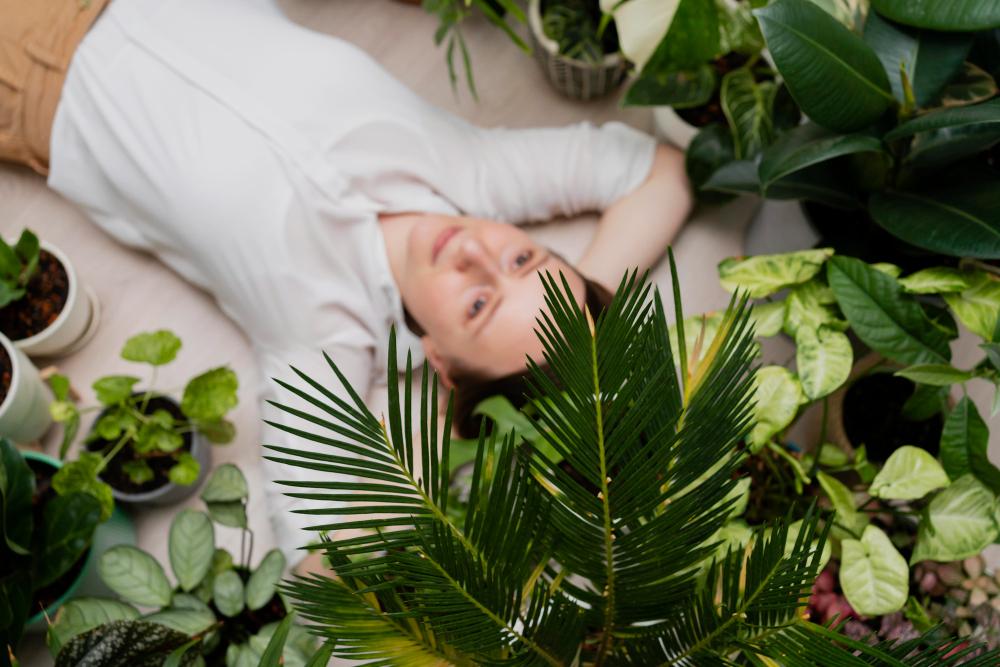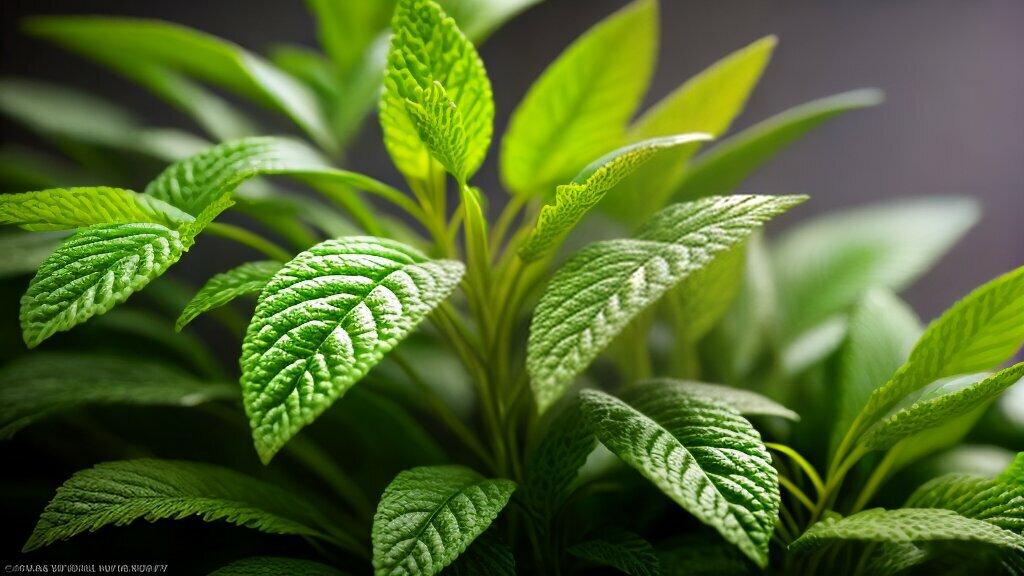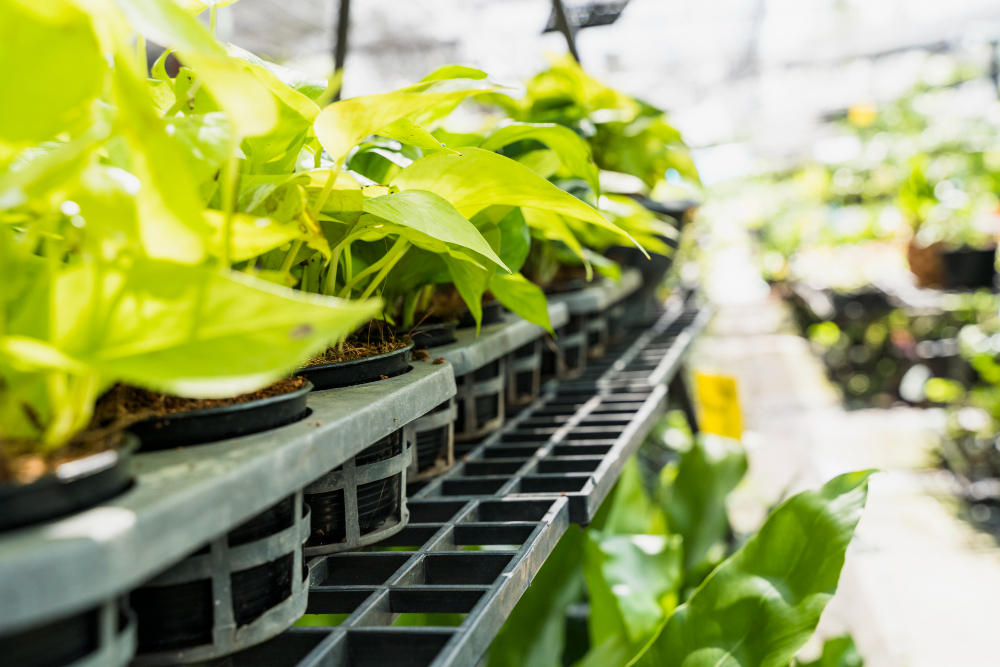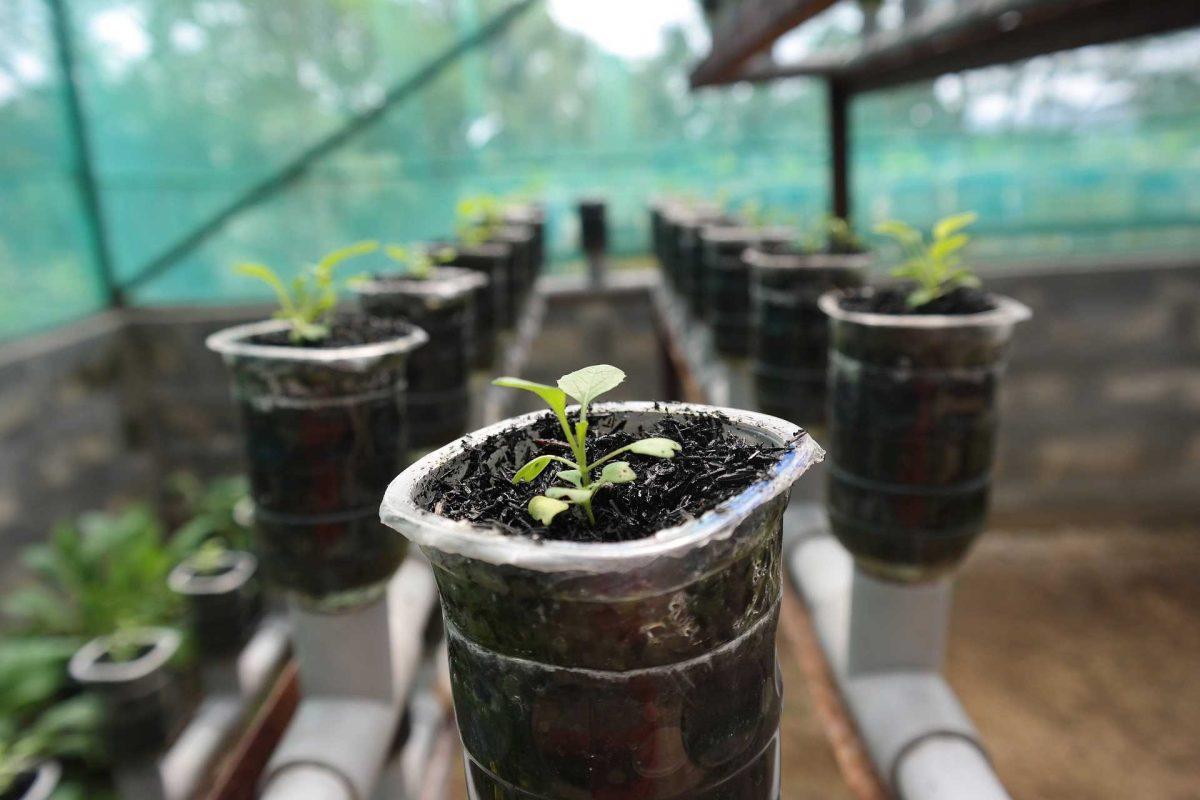Introduction
Welcome to our comprehensive guide on growing herbs and medicinal plants in grow tents. Whether you are an experienced indoor gardener or a beginner looking to explore the world of herb gardening, this guide will provide you with valuable information and tips to cultivate with success in the comfort of your own home.
Key Takeaways:
- Learn how to care for herbs grown indoors, including tips on light, water, humidity, temperature, air circulation, and fertilisation.
- Discover the best herbs to grow indoors, such as basil, chives, cilantro, mint, oregano, parsley, rosemary, sage, and thyme.
- Get guidance on planting and growing herbs indoors, including choosing the right containers and soil.
- Explore the concept of companion planting and its benefits for successful herb cultivation.
- Consider using smart indoor gardens as a convenient and space-efficient solution for herb cultivation.
Why Grow Herbs and Medicinal Plants in Grow Tents?
Indoor gardening, particularly in grow tents, offers numerous advantages for those interested in cultivating herbs and medicinal plants. In this section, we will explore the reasons why growing herbs indoors has become increasingly popular and discuss the benefits of using grow tents as a controlled environment for your plants.
One of the key reasons for choosing indoor gardening is the ability to have year-round herb cultivation. By bringing your plants indoors, you no longer have to worry about seasonal limitations or adverse weather conditions. This means that you can enjoy a continuous supply of fresh herbs, regardless of the time of year.
Grow tents provide a controlled environment that allows you to optimise the growing conditions for your herbs. You can easily adjust factors such as light, humidity, and temperature to create the ideal environment for each type of plant. This level of control ensures that your herbs receive the optimal conditions for growth, resulting in healthier and more abundant harvests.
Furthermore, grow tents offer a space-efficient solution for indoor gardening. They come in various sizes to accommodate different herb varieties and can be set up in any room or even a small balcony. This makes them a perfect choice for urban gardeners or those with limited outdoor space. With a grow tent, you can create your own mini garden and enjoy the benefits of fresh herbs, even in a compact living environment.
Choosing the Right Herbs to Grow Indoors
When it comes to growing herbs indoors, choosing the right plants is crucial for successful cultivation. In this section, we will recommend a variety of herbs that are well-suited for indoor gardening and discuss their unique qualities and benefits.
1. Basil: A versatile herb with a delightful aroma, basil is a must-have for any indoor herb garden. It thrives in well-draining soil and requires plenty of sunlight to promote healthy growth. Use it in a variety of dishes, including pasta sauces, salads, and pesto.
2. Chives: Known for their mild onion flavor, chives are easy to grow and add a burst of freshness to your culinary creations. They can be grown in pots or containers and prefer moderate sunlight. Chop them up and sprinkle over soups, omelets, or baked potatoes.
3. Cilantro: A staple in Mexican and Asian cuisine, cilantro is an aromatic herb that adds a zesty flavor to dishes. It grows best in well-drained soil and requires bright, indirect sunlight. Enjoy cilantro in salsas, salads, curries, and guacamole.
4. Mint: With its refreshing taste and invigorating aroma, mint is a popular choice for indoor herb gardens. It prefers moist soil and moderate sunlight. Use fresh mint leaves to enhance the flavors of beverages, salads, desserts, and even homemade ice cream.
5. Oregano: A robust and flavorful herb, oregano is a great addition to any indoor garden. It thrives in well-drained soil and requires plenty of sunlight. Sprinkle it over pizzas, pasta dishes, roasted vegetables, and soups for a delicious burst of flavor.
6. Parsley: Known for its vibrant green leaves and fresh taste, parsley is a versatile herb that can be grown indoors year-round. It prefers rich, well-draining soil and bright, indirect sunlight. Use it as a garnish or add it to salads, marinades, and sauces.
7. Rosemary: A fragrant and robust herb, rosemary is a favorite among both professional chefs and home cooks. It requires well-drained soil and plenty of sunlight. Use rosemary sprigs to infuse flavor into meat dishes, roasted vegetables, and homemade bread.
8. Sage: With its earthy and savory flavor, sage is an essential herb for any indoor herb garden. It prefers well-drained soil and moderate sunlight. Incorporate sage into stuffing, roasted meats, sauces, and stews for a warm and comforting taste.
9. Thyme: A versatile herb with a subtle lemony flavor, thyme is a great choice for indoor gardening. It thrives in well-draining soil and requires moderate sunlight. Use thyme leaves to season soups, stews, roasted meats, and vegetables for a savory twist.
| Herb | Preferred Soil | Light Requirements | Common Uses |
|---|---|---|---|
| Basil | Well-draining | Plenty of sunlight | Pasta sauces, salads, pesto |
| Chives | Well-draining | Moderate sunlight | Soups, omelets, baked potatoes |
| Cilantro | Well-draining | Bright, indirect sunlight | Salsas, salads, curries, guacamole |
| Mint | Moist soil | Moderate sunlight | Beverages, salads, desserts |
| Oregano | Well-draining | Plenty of sunlight | Pizzas, pasta dishes, roasted vegetables, soups |
| Parsley | Well-draining | Bright, indirect sunlight | Garnish, salads, marinades, sauces |
| Rosemary | Well-draining | Plenty of sunlight | Meat dishes, roasted vegetables, homemade bread |
| Sage | Well-draining | Moderate sunlight | Stuffing, roasted meats, sauces, stews |
| Thyme | Well-draining | Moderate sunlight | Soups, stews, roasted meats, vegetables |
These herbs are just a few examples of what you can grow indoors. Experiment with different varieties and find the ones that suit your taste and culinary preferences. With the right care and attention, your indoor herb garden will thrive, providing you with fresh and flavorful herbs all year round.
Understanding the Growing Requirements of Herbs
To ensure the healthy growth and development of your herbs, it is essential to understand their specific growing requirements. In this section, we will explore the key factors that contribute to successful herb cultivation, including light, water, humidity, temperature, air circulation, and fertilisation.
Light: Herbs thrive in bright light conditions, preferably receiving 6-8 hours of sunlight per day. If you’re growing indoors, you can use artificial grow lights to provide the necessary amount of light. Position the lights 6-12 inches above the plants, adjusting the height as they grow.
Water: Herbs require regular watering to keep their soil moist but not waterlogged. Check the soil moisture daily and water when the top inch feels dry. Be careful not to overwater as it can lead to root rot.
Humidity: Most herbs prefer moderate humidity levels ranging from 40-60%. If the air in your indoor environment is too dry, you can increase humidity by using a humidifier, placing a tray of water near the plants, or misting them with water regularly.
Temperature: Herbs generally prefer temperatures between 60-75°F (15-24°C). Avoid exposing them to extreme temperature fluctuations or drafts. If the temperature is too high, consider using fans to provide adequate air circulation and prevent heat stress.
Air Circulation: Good air circulation is crucial for preventing the development of fungal diseases. Ensure that there is proper ventilation in your grow tent or indoor space. You can use fans to promote air movement and prevent stagnant air around your herbs.
Fertilisation: Herbs have moderate fertiliser needs. Use a balanced organic fertiliser every 4-6 weeks or as directed on the packaging. Avoid overfertilisation, as it can lead to nutrient imbalances and negatively affect herb growth.
| Herb | Light Requirements | Watering | Humidity Preferences |
|---|---|---|---|
| Basil | 6-8 hours of sunlight per day or 12-16 hours of artificial light | Keep soil consistently moist | 40-60% |
| Chives | 6-8 hours of sunlight per day or 12-16 hours of artificial light | Water when the top inch of soil feels dry | 40-60% |
| Cilantro | 6-8 hours of sunlight per day or 12-16 hours of artificial light | Keep soil consistently moist | 40-60% |
| Mint | 4-6 hours of direct sunlight or bright indirect light | Water when the top inch of soil feels dry | 40-60% |
| Oregano | 6-8 hours of sunlight per day or 12-16 hours of artificial light | Allow the soil to partially dry between waterings | 40-60% |
| Parsley | 6-8 hours of sunlight per day or 12-16 hours of artificial light | Keep soil consistently moist | 40-60% |
| Rosemary | 6-8 hours of sunlight per day or 12-16 hours of artificial light | Allow the soil to partially dry between waterings | 30-50% |
| Sage | 6-8 hours of sunlight per day or 12-16 hours of artificial light | Water when the top inch of soil feels dry | 30-50% |
| Thyme | 6-8 hours of sunlight per day or 12-16 hours of artificial light | Water when the top inch of soil feels dry | 30-50% |
“Understanding the specific growing requirements of herbs is vital for cultivating healthy plants. By providing the right conditions in terms of light, water, humidity, temperature, air circulation, and fertilisation, you can ensure optimal growth and maximise their flavor and medicinal properties. Remember to choose the appropriate containers and soil, practice companion planting, and consider using smart indoor gardens for a convenient and space-efficient herb growing experience. Whether you’re growing herbs indoors or outdoors, following these guidelines will help you create a thriving herb garden all year round.”
Choosing the Right Containers and Soil for Herb Cultivation
The choice of containers and soil plays a vital role in the growth and development of your herbs. In this section, we will guide you through the process of selecting the right containers and soil for your indoor herb garden and explain how these factors contribute to successful cultivation.
When it comes to containers, opt for ones that are deep enough to accommodate the root system of your herbs. Choose containers made of durable materials such as ceramic, clay, or plastic. Each material has its advantages; for example, ceramic and clay pots provide better breathability for the roots, while plastic pots retain moisture for longer periods. Consider the size of your grow tent and the number of herbs you wish to cultivate when selecting the size and quantity of containers.
Equally important is the quality of the soil and potting mixture you use. Herbs thrive in well-draining soil that is rich in organic matter. Look for potting mixes specifically formulated for indoor gardening or make your own by combining equal parts of compost, perlite, and coconut coir. These components improve water retention and aeration, providing a healthy environment for root development.
| Benefits of Choosing the Right Containers and Soil: |
|---|
| Ensures proper drainage, preventing root rot |
| Promotes healthy root development and vigorous growth |
| Helps retain moisture and nutrients |
| Reduces the risk of pest infestations and diseases |
| Allows for easy monitoring and adjustment of moisture levels |
Remember to choose containers and soil that best suit the specific needs of the herbs you are growing. Some herbs, such as mint and thyme, prefer slightly moist soil, while others, like rosemary and lavender, require excellent drainage to prevent waterlogged roots. By considering the individual requirements of your herbs and providing them with suitable containers and soil, you can create an optimal environment for their growth and ensure a bountiful harvest.
Quick Tips:
- Choose containers with drainage holes to prevent waterlogging.
- Use a well-draining potting mix with organic matter.
- Consider the size and material of containers based on your grow tent and herb selection.
- Monitor moisture levels and adjust watering accordingly.
- Research the specific needs of your herbs to provide the best growing conditions.
Planting and Growing Herbs Indoors
Now that you have chosen your herbs and prepared the containers and soil, it’s time to start planting and growing your indoor herb garden. In this section, we will guide you through the process, from seed germination to maintaining healthy herb plants.
1. Seed Germination: Begin by planting your herb seeds in small pots or seed trays filled with moist potting soil. Sow the seeds according to the recommended depth on the seed packet and cover them with a thin layer of soil. Place the pots or trays in a warm location with plenty of natural light or use grow lights for optimal germination. Keep the soil consistently moist but avoid overwatering.
2. Transplanting: Once your seeds have germinated and developed a few sets of leaves, it’s time to transplant them into their final containers. Choose pots that have drainage holes to prevent waterlogging. Gently remove the seedlings from their original pots or trays, taking care not to damage the delicate roots. Place each seedling in its new container, ensuring that it is planted at the same depth it was in the original pot. Firm the soil gently around the base of the seedling to provide stability.
3. Proper Spacing and Maintenance Techniques: Proper spacing is essential for healthy herb growth. Be sure to leave enough space between each plant to allow for air circulation and prevent overcrowding. Regularly check the moisture level of the soil and water your herbs when the top inch feels dry. Avoid overwatering, as it can lead to root rot. Prune your herbs regularly to encourage bushier growth and remove any dead or yellowing leaves. Maintain a consistent temperature and humidity level, and provide adequate sunlight or artificial lighting for at least six to eight hours per day.
Tips and Tricks for Successful Herb Growing
- Consider companion planting: Some herbs, such as basil and parsley, benefit from being planted alongside certain vegetables or flowers. Companion planting can help repel pests, deter diseases, and promote healthier growth.
- Fertilise regularly: Feed your herbs with a balanced organic fertiliser every few weeks to provide them with essential nutrients. Be sure to follow the package instructions and avoid overfertilisation, as it can lead to nutrient burn.
- Rotate your herbs: To prevent soil depletion and maintain healthy growth, rotate your herb plants every six months. This will help prevent the buildup of pests and diseases in the soil.
By following these steps and implementing the recommended tips and tricks, you will be well on your way to a thriving indoor herb garden. Enjoy the satisfaction of harvesting your own fresh herbs and adding a burst of flavor to your culinary creations!
| Recommended Herbs for Indoor Gardening | Light Requirements | Optimal Temperature | Watering Needs |
|---|---|---|---|
| Basil | Bright, direct sunlight for 6-8 hours | 70-85°F (21-29°C) | Keep the soil consistently moist |
| Chives | Bright, indirect sunlight or artificial grow lights | 55-75°F (13-24°C) | Water thoroughly when the top inch of soil feels dry |
| Cilantro | Bright, indirect sunlight or partial shade | 60-75°F (15-24°C) | Water when the top inch of soil feels dry |
| Mint | Bright, indirect sunlight or partial shade | 65-70°F (18-21°C) | Keep the soil evenly moist, but not waterlogged |
| Oregano | Bright, direct sunlight for 6-8 hours | 60-75°F (15-24°C) | Allow the soil to dry between waterings |
| Parsley | Bright, indirect sunlight or partial shade | 60-70°F (15-21°C) | Water when the top inch of soil feels dry |
| Rosemary | Bright, direct sunlight for 6-8 hours | 65-80°F (18-27°C) | Allow the soil to dry between waterings |
| Sage | Bright, direct sunlight for 6-8 hours | 60-75°F (15-24°C) | Water when the top inch of soil feels dry |
| Thyme | Bright, direct sunlight for 6-8 hours | 60-70°F (15-21°C) | Allow the soil to dry between waterings |
Companion Planting for Successful Herb Cultivation
Companion planting is a gardening technique that involves planting different herbs and plants together to maximise their growth and health benefits. In this section, we will discuss the concept of companion planting and its application in indoor herb gardens.
When it comes to indoor gardening, companion planting can be a game-changer. By strategically placing compatible herbs together, you can create a miniature ecosystem that promotes healthy growth and deters pests naturally. For example, planting basil alongside tomatoes can help improve the flavor and growth of both plants, while repelling pests like aphids and whiteflies.
Another excellent companion planting combination for indoor herb gardens is pairing sage with rosemary. These two herbs not only complement each other in terms of culinary uses but also share similar growing requirements. By planting them together, you can enhance their fragrance, flavor, and overall health. Additionally, the strong scent of sage acts as a natural repellent for pests, making it an effective partner for rosemary.
Companion Planting Chart for Indoor Herb Gardens
| Herb | Companion Plants | Benefits |
|---|---|---|
| Basil | Tomatoes, peppers, oregano | Improved flavor, pest deterrence |
| Chives | Mint, parsley, rosemary | Insect repellent, increased growth |
| Coriander (Cilantro) | Spinach, dill, anise | Extended harvesting season, improved flavor |
| Parsley | Tomatoes, asparagus, carrots | Increased nutrient absorption, pest repellent |
Remember, not all herbs make good companions, so it’s essential to choose plants that have similar growing requirements and benefits. By implementing companion planting in your indoor herb garden, you can create a sustainable and thriving ecosystem that promotes the health and vigor of your plants while reducing the need for chemical pesticides.
If you’re looking for a hassle-free and space-efficient way to grow herbs indoors, smart indoor garden systems are an excellent option to consider. In this section, we will explore the features and advantages of these innovative gardening solutions and recommend some top choices for your indoor herb garden.
Smart indoor gardens are designed to simplify the process of growing herbs by providing an all-in-one solution that takes care of the plants’ lighting, watering, and nutrient needs. These systems typically consist of a compact structure with built-in LED grow lights, automated watering systems, and self-regulating temperature controls. They are perfect for urban gardening enthusiasts or anyone with limited space.
One of the main advantages of smart indoor gardens is their efficiency. These systems utilise energy-efficient LED lights that provide the ideal spectrum and intensity for plant growth, ensuring that your herbs receive the optimal amount of light without wasting energy. The automated watering systems also help to prevent over or under watering, ensuring that your herbs receive just the right amount of moisture.
| Advantages of Smart Indoor Gardens | Top Choices |
|---|---|
|
|
Some popular options for smart indoor gardens include the Smart Garden 3, a compact and user-friendly system that is perfect for beginners. It allows you to grow up to three different herbs at a time, taking up minimal space. The Click & Grow Smart Garden 9 is another great choice for those looking to grow multiple herbs simultaneously. With its modular design and adjustable lamp arm, you can easily expand and customise your indoor garden. For more advanced users, the AeroGarden Ultra offers a range of features and customisable settings, allowing you to fine-tune the growing conditions for your herbs.
With a smart indoor garden, you can enjoy fresh herbs year-round, regardless of the outdoor weather conditions. These innovative systems provide an easy and convenient way to grow herbs indoors, making them perfect for urban gardening enthusiasts and anyone who wants to experience the joys of sustainable and organic herb gardening from the comfort of their own home.
Growing Herbs Outdoors: Pots, Containers, and Windowsills
While indoor gardening offers many advantages, there’s also something special about growing herbs outdoors. In this section, we will explore the joys of outdoor herb cultivation, whether on a windowsill or in pots and containers, and provide tips for success in an outdoor environment.
Growing herbs outdoors allows them to bask in natural sunlight and breathe in fresh air, resulting in robust growth and flavorful harvests. One of the easiest ways to start is by utilising pots and containers. These versatile options allow you to place your herb garden on a balcony, patio, or terrace, making it accessible and convenient.
When choosing pots and containers, opt for ones with good drainage to prevent waterlogged roots. You can use a variety of materials, such as terracotta, ceramic, or plastic. Just make sure to select sizes appropriate for the herbs you want to grow. With proper watering and regular fertilisation, your outdoor herbs will thrive, providing a fresh and fragrant addition to your culinary creations.
| Herb | Best Growing Conditions |
|---|---|
| Basil | Full sun, well-drained soil |
| Chives | Partial shade to full sun, moist soil |
| Cilantro | Partial shade to full sun, well-drained soil |
| Mint | Partial shade to full sun, moist soil |
| Oregano | Full sun, well-drained soil |
| Parsley | Partial shade to full sun, well-drained soil |
| Rosemary | Full sun, well-drained soil |
| Sage | Full sun, well-drained soil |
| Thyme | Full sun, well-drained soil |
For those with limited outdoor space, windowsill herb gardening is a fantastic option. Most herbs will grow happily in small pots placed near a sunny window. Imagine having fresh herbs within arm’s reach as you cook your favorite meals! Just ensure that the windowsill receives at least six hours of sunlight each day and rotate the pots occasionally to prevent one-sided growth.
Whether you choose pots, containers, or window sills, outdoor herb gardening allows you to connect with nature, delight in the vibrant colors and scents, and take pleasure in the rewarding experience of growing your own herbs.
Harvesting Herbs and Seasonal Care
As your herbs grow and flourish, it’s important to know how and when to harvest them to enjoy their full flavor and aroma. In this section, we will explore the art of herb harvesting and discuss seasonal care practices to keep your herb garden thriving year-round.
Harvesting herbs is a delightful experience that allows you to enjoy the fruits of your labor. To maximise flavor and freshness, it’s best to harvest herbs in the morning, just after the dew has dried but before the heat of the day sets in. Select stems that are healthy and vibrant, avoiding any that show signs of disease or pest damage. Use sharp scissors or pruning shears to make clean cuts just above a leaf node or set of leaves. This will encourage new growth and ensure the plant remains healthy.
Once you’ve harvested your herbs, it’s time to dry or store them properly. Herbs can be air-dried by tying them in small bunches and hanging them upside down in a well-ventilated area away from direct sunlight. Alternatively, you can dry them on a tray lined with parchment paper in a warm, dry place. To preserve their color and flavor, store the dried herbs in airtight containers away from light and heat.
Seasonal care is vital for the long-term health of your herb garden. During the growing season, it’s important to regularly pinch back or trim your herbs to promote bushier growth and prevent them from becoming leggy. Trim off any flowers that appear, as they can affect the flavor and quality of the leaves. Additionally, be mindful of your herbs’ water and fertilisation needs, adjusting them as necessary with the changing seasons. Some herbs may require more water in the summer, while others may prefer a drier environment.
| Herb | Harvesting Time | Care Tips |
|---|---|---|
| Basil | Harvest leaves as needed once the plant has reached about 6 inches in height. | Pinch back regularly to promote bushier growth. Keep soil consistently moist. |
| Mint | Harvest leaves once the plant is established and has enough foliage for use. | Trim back regularly to prevent it from becoming invasive. Keep soil moist but not waterlogged. |
| Parsley | Harvest outer leaves once the plant has grown to about 6 inches in height. | Trim or pinch back regularly to encourage fresh growth. Keep soil moist. |
| Rosemary | Harvest sprigs as needed once the plant is mature and has developed sturdy branches. | Prune lightly after flowering to maintain shape. Allow soil to dry out slightly between waterings. |
| Thyme | Harvest sprigs as needed once the plant has established and has enough foliage. | Trim back after flowering to promote fresh growth. Allow soil to dry slightly between waterings. |
By following proper harvesting techniques and seasonal care practices, you can enjoy a bountiful and thriving herb garden throughout the year. Remember to experiment with different herbs and discover the unique flavors they bring to your culinary creations. Happy herb gardening!
Conclusion
We hope this comprehensive guide has provided you with valuable information and inspiration to embark on your own journey of growing herbs and medicinal plants in grow tents. With the right knowledge and techniques, you can cultivate a thriving and aromatic herb garden right in the comfort of your own home.
Indoor gardening has become increasingly popular, allowing individuals to enjoy the benefits of sustainable and organic herb cultivation regardless of their living situation. By utilising grow tents, you can create the perfect environment for your herbs, ensuring optimal growth and maximum yield.
Remember to choose the right herbs for indoor cultivation, such as basil, chives, cilantro, mint, oregano, parsley, rosemary, sage, and thyme. These herbs not only offer medicinal properties but also add delicious flavor to your culinary creations.
Whether you are a beginner or an experienced gardener, this guide has covered all the essential aspects of growing herbs indoors. From selecting the right containers and soil to understanding the specific growing requirements, you now have the knowledge to cultivate healthy and thriving herbs in your own home.
Don’t forget to explore the concept of companion planting and consider using smart indoor garden systems for a convenient and space-efficient herb-growing experience. And if outdoor gardening is more your style, you can still enjoy growing herbs in pots, containers, or on windowsills.
Lastly, remember to harvest your herbs at the right time and care for them throughout the seasons. By following these practices, you can ensure the longevity of your herb garden and continue to enjoy the benefits of fresh, homegrown herbs all year round.
FAQ
Q: Why should I grow herbs and medicinal plants in grow tents?
A: Growing herbs and medicinal plants in grow tents offers several benefits. It allows you to have fresh herbs year-round, regardless of the season. Grow tents provide a controlled environment for optimal growth, protecting your plants from pests and extreme weather conditions. Additionally, growing herbs indoors is a sustainable and convenient option for urban gardeners.
Q: What are the best herbs to grow indoors?
A: Some of the best herbs to grow indoors include basil, chives, cilantro, mint, oregano, parsley, rosemary, sage, and thyme. These herbs are well-suited for indoor environments and offer various culinary and medicinal benefits.
Q: What are the key growing requirements for herbs?
A: Herbs require adequate light, water, humidity, temperature, air circulation, and fertilisation to thrive. Providing the right conditions in your grow tent will ensure healthy and productive herb growth.
Q: How do I choose the right containers and soil for herb cultivation?
A: When choosing containers for herb cultivation, consider their size and material. Opt for containers that provide sufficient space for root growth and allow for proper drainage. As for soil, use a quality potting mixture that is well-draining and nutrient-rich.
Q: How do I plant and grow herbs indoors?
A: To plant and grow herbs indoors, start by germinating seeds and transplanting them into your chosen containers. Ensure proper spacing between herbs and follow maintenance techniques like regular watering and pruning to support healthy growth.
Q: What is companion planting and how does it benefit herb cultivation?
A: Companion planting involves growing compatible plants together to promote healthy growth, deter pests, and enhance flavor profiles. Certain herbs work well together, and incorporating companion planting techniques can improve the overall health and productivity of your herb garden.
Q: Are there smart indoor gardens available for herb growing?
A: Yes, smart indoor gardens offer a convenient and space-efficient solution for growing herbs. These systems use advanced technology to automate the growing process, making it easier for beginners or those with limited space to cultivate herbs indoors.
Q: Can I grow herbs outdoors in pots and containers?
A: Yes, you can grow herbs outdoors in pots and containers. Choose suitable outdoor containers and select herbs that are well-suited for outdoor cultivation. Proper care and maintenance are key to ensuring healthy plant growth in an outdoor environment.
Q: How do I harvest herbs and care for them throughout the seasons?
A: Harvest herbs by snipping off leaves as needed, promoting continuous growth. Proper timing and techniques are essential for maximum flavor. Throughout the seasons, provide appropriate care such as adjusting watering and temperature requirements to support the longevity of your herb garden.

